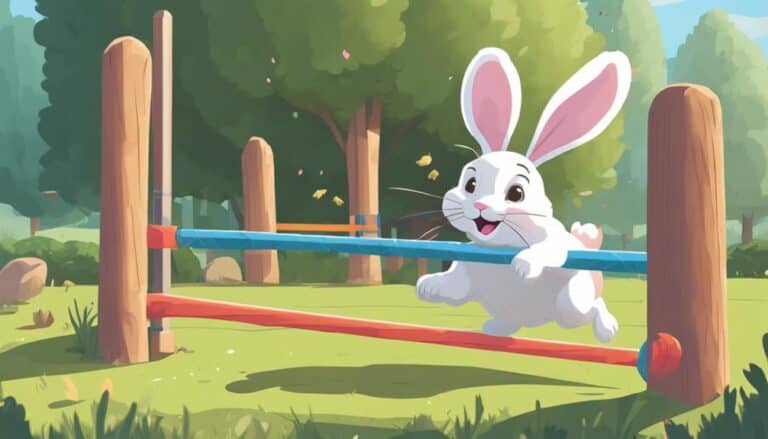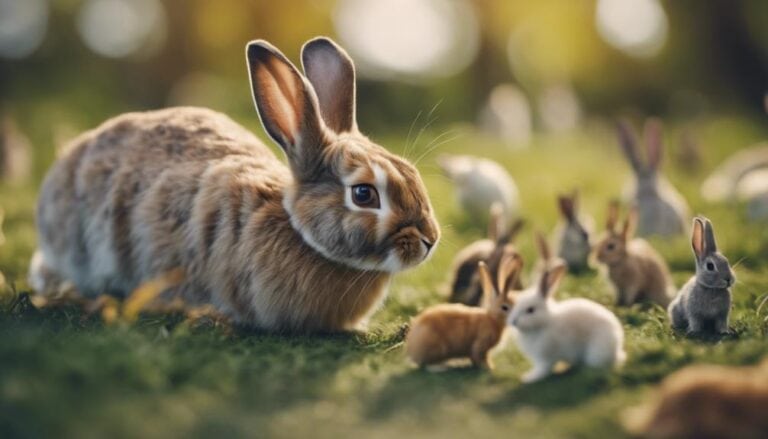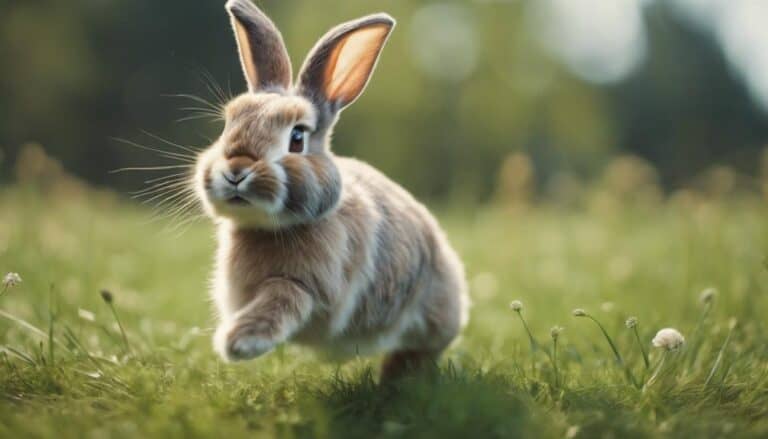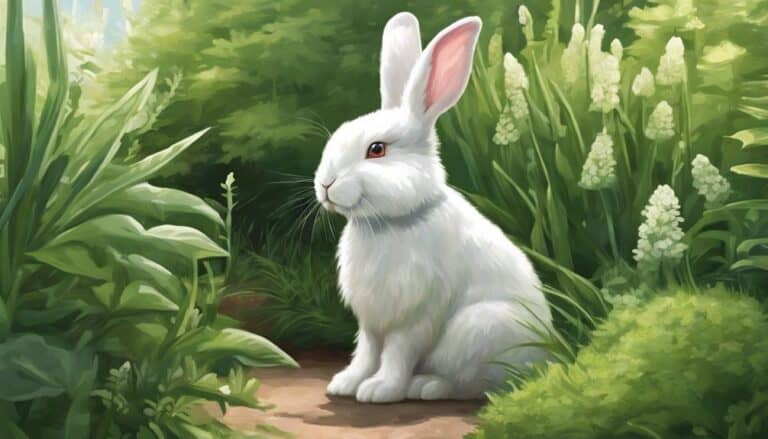When it comes to the question of whether bunnies can cry, you might be surprised to discover that the answer isn't as straightforward as it seems.
While rabbits can emit sounds that resemble crying, the presence of actual tears is a different story.
Understanding the nuances behind these vocalizations and the reasons driving them can shed light on the complexity of rabbit communication.
So, next time you hear your bunny making those distressing noises, it might be worth exploring further to decipher what they're trying to convey.
Contents
Key Takeaways
- Bunnies lack tear ducts for emotional crying.
- Excessive moisture in rabbit eyes indicates health issues.
- Rabbit crying is a form of communication for needs.
- Understanding rabbit vocalizations aids in their well-being.
Can Bunnies Shed Tears?

Bunnies don't shed tears as a form of emotional expression due to the absence of tear ducts in their anatomy. Unlike humans, rabbits lack the physiological ability to produce tears associated with emotions like sadness or joy. When a rabbit displays weepy eyes, it's usually a sign of underlying medical concerns such as dental disease or other health issues rather than emotional distress. The condition known as weepy eye in rabbits causes excessive wetness around the eyes, which isn't linked to feelings of sadness or happiness.
It is important to understand that the absence of tears in rabbit crying is primarily due to their unique eye anatomy rather than a lack of emotions. When observing a rabbit with weepy eyes, it's important to take into account the potential physiological needs or distress the rabbit might be experiencing rather than attributing it to emotional states. By recognizing these distinctions, caretakers can better address the health and well-being of their rabbit companions.
Do Rabbits Display Emotional Tears?
Rabbits don't exhibit emotional tears as a form of expressive behavior due to the absence of tear ducts associated with emotional responses in their anatomy. When it comes to crying, rabbits make sounds that can differ based on the situation.
Baby rabbits cry to communicate with their mothers, often emitting high-pitched sounds. An adult rabbit may scream when in great distress or pain, but this shouldn't be confused with emotional tears.
One common reason for a rabbit to make a crying sound is when they're exposed to loud noises, which can startle or frighten them. It's essential to differentiate between different sounds a rabbit makes to understand their needs better.
Understanding Rabbit Crying Noises

Understanding the various noises emitted by rabbits when they cry provides valuable insights into their emotional and physical states. Rabbits are vocal animals and express themselves through a range of sounds, each with its own meaning. The table below outlines some common rabbit crying noises and their possible interpretations:
| Noise | Interpretation |
|---|---|
| Whimpering | Signal of distress or discomfort |
| Grunting | Expression of displeasure or annoyance |
| High-pitched squealing or screaming | Indicates extreme pain or fear |
| Sheep bleating | Common in baby rabbits when hungry or scared |
| Growling, hissing, or foot stomping | Signs of aggression or territorial behavior |
Even though rabbits do not cry tears like humans, their vocalizations serve as important communication tools. By recognizing these sounds, different owners can better attend to the needs of their rabbits, whether related to Rabbit Care, Urinary Tract issues, or emotional well-being. Understanding rabbit crying noises is essential for keeping rabbits happy and healthy.
Reasons Behind Rabbit Tears
Exploring the physiological factors contributing to excessive moisture in a rabbit's eyes sheds light on the underlying reasons behind rabbit tears. When considering the common reasons for this occurrence, it's important to remember that rabbits don't cry emotionally like humans. Instead, issues like conjunctivitis, dental problems, or other health concerns may lead to weepy eyes in rabbits.
If you notice your rabbit making crying noises that sound similar to a scream, it's important to make sure they receive the necessary veterinary care. This is especially true for pregnant does or rabbits living alone, as these situations may require extra attention. Understanding the root cause of tear production in rabbits is crucial, as it can indicate the need to take prompt action to address any underlying health issues for their well-being.
Can Bunnies Cry Like Humans?
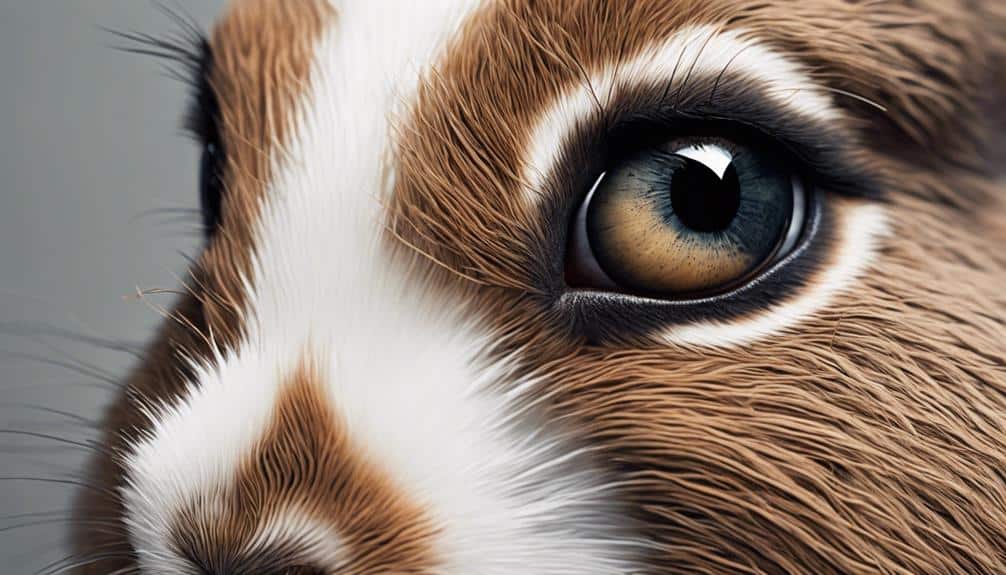
Investigating the physiological mechanisms of tear production in rabbits reveals that they don't exhibit emotional crying similar to humans due to the absence of tear ducts for such expression. When a pet rabbit is crying, it isn't shedding tears in the way humans do. Instead, crying in rabbits isn't necessarily about expressing emotions like sadness.
The sounds a rabbit makes when it's distressed might resemble crying, but it's essential to understand that rabbits use vocalizations like whimpering, grunting, or screaming to communicate various needs or discomfort. For instance, a crying baby rabbit could be signaling hunger, pain, or a desire for attention.
Observing your pet rabbits regularly to make sense of their sounds and behaviors can help you interpret their needs accurately. Remember that when one rabbit is crying, it may not sound exactly like a human's cry when they're sad, but it's a form of communication worth paying attention to for their well-being.
Do Bunnies Show Signs of Distress or Grief?
When bunnies experience distress or grief, they may show subtle signs such as loss of appetite, lethargy, or seeking solitude. It’s important to monitor them closely and provide comfort during this time. With proper care and attention, bunnies coming back to life from distress or grief is possible.
Frequently Asked Questions
Why Is My Rabbit Crying Tears?
When your rabbit cries tears, it's important to understand that it's not due to emotions but could signal health issues such as blockages or infections. Observing crying patterns helps gauge your rabbit's wellbeing, ensuring prompt veterinary care.
Why Is My Rabbit Whimpering?
When your rabbit is whimpering, pay attention to their behavior. Look for signs of distress, pain, or fear. Comfort them with gentle handling, provide a safe environment, and seek veterinary care if needed. Trust building and bonding activities can help alleviate stress.
What Do Bunny Cries Sound Like?
Bunny cries can vary from soft whimpers to high-pitched squeals, reflecting rabbit emotions and distress. Understanding their adorable cries is essential in decoding bunny language, evaluating their behavior, and recognizing emotional expressions through soundscape analysis.
Do Rabbits Cry When They're Hurt?
When rabbits are hurt, they exhibit signs of pain through vocalizations, behavior changes, and distress. They lack tear ducts for emotional crying, but their cries can indicate discomfort. It's important to monitor their body language and reactions for empathy and care.
Conclusion
To sum up, while bunnies can't shed tears like humans, they can still exhibit crying noises that signal various needs or emotions. Understanding the reasons behind a rabbit's crying can help guarantee their well-being and health.
So next time you hear your bunny making what sounds like crying noises, remember, they may not be shedding tears, but they're definitely trying to communicate something important to you. Keep an ear out and respond accordingly to your furry friend's needs.

